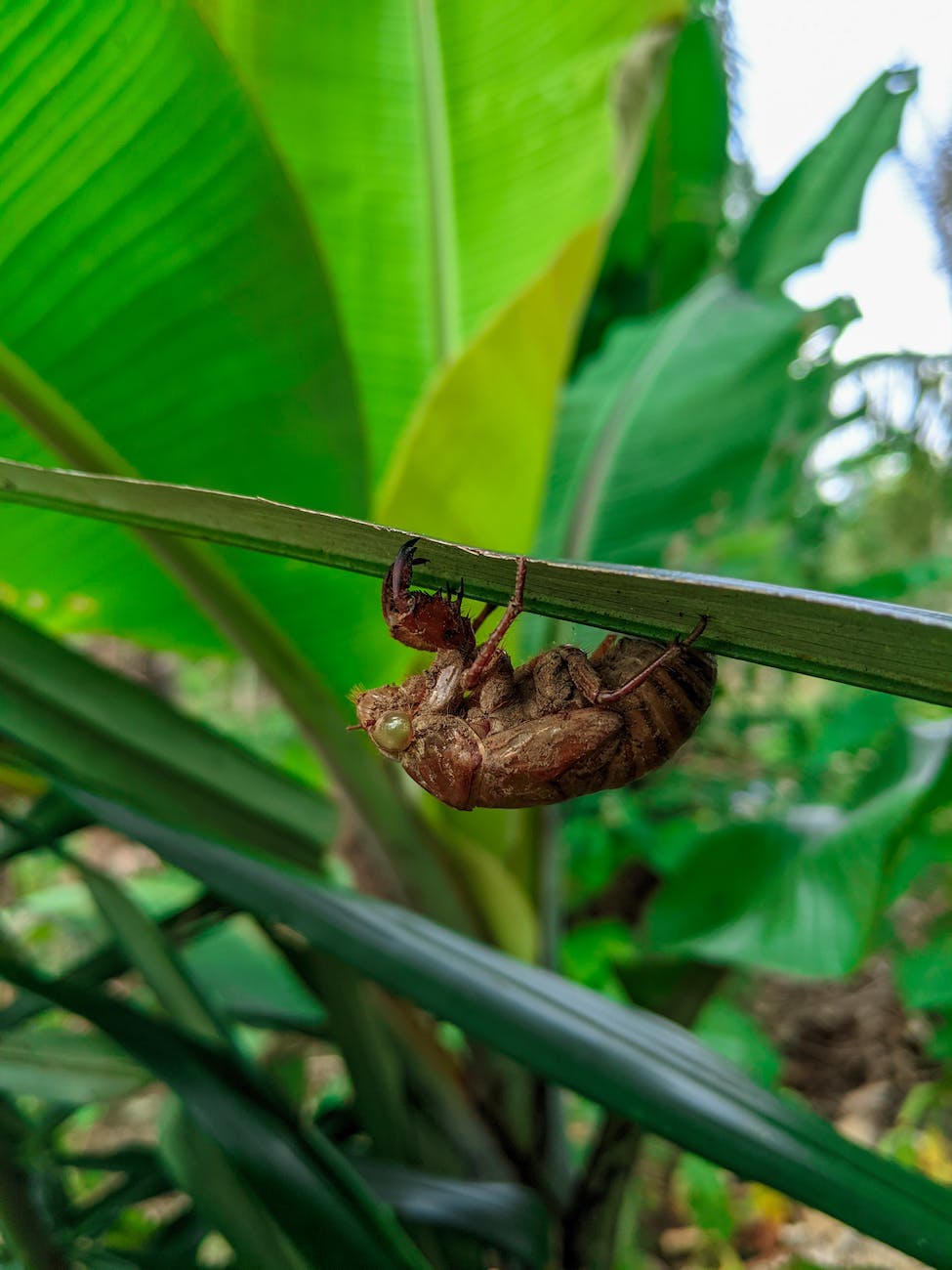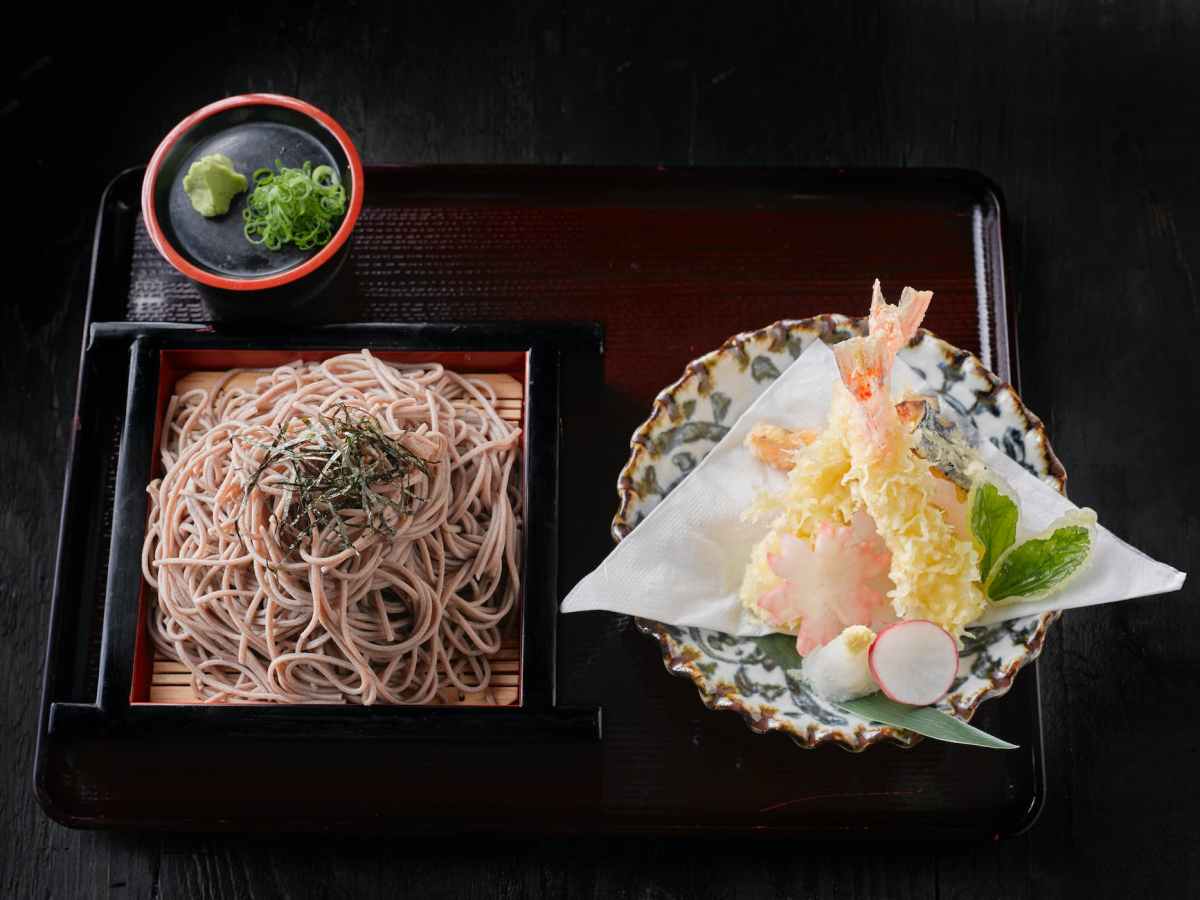Hello, everyone. Today, I want to discuss a special topic that takes us back through time. We’re going to explore why Japan’s ancient tumuli, or kofun, are not excavated. These mounds are more than just ancient hills of earth. They’re messages from the past, cultural heritages, and gifts from our ancestors.
Respect and Protection: The Bond between Modern Society and Ancient Tumuli
Are you aware of why these tumuli are so special? Built between the 3rd and 7th centuries, they are some of the most mystical relics in Japanese history. However, they are more than just historical sites. They hold significant meaning for many Japanese people today, representing respect for ancestors and deep reverence for history.
Delicate Process: The Technique of Excavating Tumuli
Excavating these tumuli is not just about digging. It’s like a time travel to the past, requiring extremely delicate techniques and profound expertise. A single mistake could mean the loss of invaluable historical information forever. This is why we need to treat these tumuli with care and respect.
Time and Resources: The Reality of Excavation
Did you know that excavating tumuli requires an enormous amount of time and resources? In Japan, decisions must be made carefully about which tumuli to excavate, given the limited budget. This is a crucial decision for connecting our historical heritage to the future.
The Meaning of Cultural Heritage: Tumuli to Us
Finally, tumuli are not just remnants of the past. They are an essential part of our culture, identity, and history. Through these tumuli, we can connect with the lives, beliefs, and dreams of our ancestors.
By preserving and valuing these tumuli, we bridge the past and the present, building a pathway to the future. I hope this blog helps you appreciate the deep historical significance of these ancient tumuli and the modern role in preserving them.
Let’s cherish the message these Japanese tumuli convey to us. It’s our collective responsibility to honor the past and build the future.
タグ: japanese
過去を守る現代の役割:日本の古墳が語る歴史の重み
こんにちは、皆さん。今日は、私たちの心を遠い過去に連れて行く特別なテーマについてお話ししたいと思います。それは、なぜ日本の古墳が発掘されないのか、という話です。古墳は、ただの古い土の山ではありません。それは時を超えたメッセージ、文化的遺産、そして私たちの先祖からの贈り物です。
尊重と保護:古墳と現代社会の絆
皆さんは、古墳がなぜ特別なのかをご存知ですか?これらは、3世紀から7世紀に造られた、日本の歴史の中で最も神秘的な遺跡の一つです。しかし、これらの古墳はただの遺跡ではなく、今もなお多くの日本人にとって重要な意味を持っています。それは、祖先への尊敬と、歴史に対する深い敬意の表れなのです。
繊細な手作業:古墳発掘の技術
古墳の発掘は、単なる掘削作業ではありません。それは、過去への一種のタイムトラベルであり、極めて繊細な技術と深い専門知識が必要です。過ちがあれば、貴重な歴史的情報を永遠に失う可能性があります。だからこそ、私たちは古墳を慎重に、そして敬意を持って扱う必要があるのです。
時間と資源:発掘の現実
皆さん、古墳の発掘には膨大な時間と資源が必要だということをご存知でしょうか。日本では、限られた予算の中で、どの古墳を発掘するかを慎重に選ばなければなりません。これは、私たちの歴史的遺産を未来へと繋ぐための大切な決断です。
文化的遺産の意味:私たちにとっての古墳
最後に、古墳は単に過去の名残ではありません。それは、私たちの文化、アイデンティティ、そして歴史を形作る重要な部分です。これらの古墳を通して、私たちは先人たちの生活、信仰、そして夢に触れることができます。
私たちは、古墳を守り、大切にすることで、過去と現代をつなぎ、未来への橋を築くことができるのです。このブログを読んで、皆さんも古墳が持つ深い歴史的意義と、それを守る現代の役割について、少しでも感じていただければ幸いです。
最後に、日本の古墳が私たちに伝えるメッセージを、一緒に大切にしていきましょう。それは、過去を敬い、未来を築くための、私たち全員の責任です。
日本の神道とクリスマス:異文化の融合が生み出す多様性
こんにちは、皆さん!今日は日本の神道とクリスマスの関連性について、その魅力的な多様性に焦点を当てて考察してみたいと思います。日本の文化は、異なる価値観や伝統を絶妙に融合させることで知られています。この現象を深く掘り下げることで、私たちの日常に根付いている豊かな文化の奥深さを再発見できるでしょう。
神道の「八百万の神」とは?
神道における「八百万(やおよろず)の神」という表現は、自然界や人間の生活に息づく無数の神々を指します。山、川、木々、さらには風や雨まで、あらゆる自然要素に神性を見出すこの考え方は、日本文化の多様性と深いつながりを持っています。
クリスマスの日本での受け入れ方
一方、クリスマスはもともとキリスト教の祭日ですが、日本では宗教的な意味合いを超え、広く文化的なイベントとして受け入れられています。これは、日本が異文化を取り入れ、独自の形で解釈し、楽しむ能力を持っていることの証です。
異文化との融合が生み出す新たな価値
神道の多様性とクリスマスの受容は、表面的には相反するように見えますが、実は共通する点が多いのです。神道が多様な自然現象や人間活動に神性を見出し、世界を包括的に捉えようとするのに対し、クリスマスの受け入れ方は、異文化を理解し、日本独自の形で楽しむ姿勢を示しています。
日本文化の進化
このように、日本では異なる文化や価値観を受け入れ、それを自国の文化に織り交ぜることで、独自の多様性を生み出してきました。神道の「八百万の神」の概念が示す自然界と人間世界の多様性は、現代の日本社会における異文化の受け入れ方、例えばクリスマスのような西洋の祭日の取り入れ方にも影響を与えています。
結論
日本の文化は、根底にある多様性の受容と融合によって、常に進化し続けています。私たちはこの文化の中で生き、多様性を受け入れることで、より豊かな世界観を築くことができるのです。
それでは、皆さんも日本の多様な文化を楽しんでみてはいかがでしょうか。コメントや感想をお待ちしています!次回のブログもお楽しみに!
Learning from the Jomon Era: The True Meaning of Letting Go of Possessions and Attachments
Introduction: Hello, everyone! Today, I want to talk about an important lesson we can learn from the people of Japan’s Jomon period, especially focusing on how letting go of material possessions and attachments can bring peace and harmony into our daily lives.
Life in the Jomon Era: The people of the Jomon period in Japan lived in harmony with nature. They did not try to dominate nature but lived by adapting to and appreciating its blessings. For them, material possessions were merely necessities for living and not objects of excessive attachment. This offers a significant hint for us modern people.
The Importance of Letting Go of Possessions and Attachments: Our contemporary society constantly pressures us to ‘possess more.’ However, like the people of the Jomon era, letting go of our attachment to material possessions can bring us inner peace. The fewer possessions we have, the less worry and anxiety we will have about them.
Applying to Modern Life: So, how can we incorporate this ancient wisdom into our modern lives? Start by reassessing what you own and keeping only what is truly necessary. Also, prioritize human relationships over material things, and cherish connections with community, family, and friends.
Conclusion: This lesson from the people of the Jomon era can reduce stress and anxiety in modern society, paving the way for a more peaceful and happier life. Letting go of possessions and attachments is not just about discarding material things; it’s about pursuing mental peace and happiness. Try incorporating the teachings of the Jomon period into your daily life for a more fulfilling experience.
Afterword: I hope today’s blog serves as a valuable source of information and brings a fresh perspective to your daily life. Please feel free to share your thoughts and experiences in the comments and through sharing!
縄文時代の教えから学ぶ:所有と執着を手放すことの真の意味
はじめに: 皆さん、こんにちは!今日は縄文時代の日本から、私たち現代人が学べる大切な教訓についてお話ししたいと思います。特に、物質的な所有と執着を手放すことが、どのようにして私たちの日常生活に平和と調和をもたらすかに焦点を当ててみましょう。
縄文時代の生活とは: 縄文時代の日本人は、自然との調和の中で生活していました。彼らは自然を支配しようとせず、自然の恵みに感謝し、それに適応することで暮らしていました。この時代の人々にとって、物質的な所有は生活の必需品に過ぎず、過剰な執着の対象ではありませんでした。これは、私たち現代人にとって重要なヒントを与えてくれます。
所有と執着を手放すことの重要性: 私たちの現代社会は、常に「もっと多くを所有するべきだ」という圧力にさらされています。しかし、縄文時代の人々のように、物質的な所有に対する執着を手放すことで、心の平穏を得ることができるのです。所有物が少なければ、それに対する心配や不安も少なくなります。
現代生活への応用: では、私たちはどのようにしてこの古代の教訓を現代生活に取り入れることができるでしょうか?まずは自分の持ち物を見直し、本当に必要なものだけを選ぶことから始めましょう。また、物質的なものよりも人間関係を重視し、コミュニティや家族、友人とのつながりを大切にすることが重要です。
結論: 縄文時代の人々から学ぶこの教訓は、現代社会におけるストレスや不安を減らし、より平和で幸福な生活への道を開くことでしょう。所有と執着を捨てることは、心の平穏と幸福を追求する過程でもあるのです。みなさんも、縄文時代の教えを日常生活に取り入れて、より充実した生活を送ってみてはいかがでしょうか。
あとがき: 今日のブログが皆さんにとって有益な情報源となり、日々の生活に新たな視点をもたらすことを願っています。コメントやシェアを通じて、皆さんの考えや経験も是非共有してくださいね!
Between Fairness and Equality – Exploring Diversity in Japanese Culture
Hello, everyone! Today, I want to delve into the concepts of ‘fairness’ and ‘equality’ within Japanese culture. This topic is deeply ingrained and fascinatingly significant in Japanese society.
A Unique Perspective of Japanese Culture
In Japan, there’s a traditional emphasis on ‘fairness’ over ‘equality’. This means valuing appropriate actions based on individual situations and backgrounds rather than uniform treatment. But how does this manifest in everyday life?
Fairness in Education and the Workplace
In Japanese schools, teaching is tailored to each student’s abilities and interests. Rather than providing the same education to all, it’s about adapting to individual needs. Similarly, in the workplace, employees are typically assessed based on their unique capabilities and contributions.
Embracing Diversity
Japan has long been seen as a relatively homogeneous culture. However, with increasing globalization, a diverse array of cultures and values now coexists. In this diverse environment, a ‘fair’ approach, respecting each individual’s cultural background and responding appropriately, contributes to societal harmony and development.
Stepping Towards the Future
Yet, as Japan seeks alignment with global standards, integrating and evolving fairness and diversity remains a significant challenge for the future.
What are your thoughts on this distinction between ‘fairness’ and ‘equality’? How do you perceive the role of these concepts in Japanese culture and society? Please share your opinions and experiences in the comments.
I hope this article helps in understanding the nuances of diversity and fairness. Let’s meet again next time with another intriguing topic!
“Listening to the Voices of Insects” – Exploring Japan’s Unique Ability
Introduction: Hello everyone! Today, I would like to talk about the unique ability that we Japanese possess – the ability to listen to and distinguish the sounds of insects. The strong cries of cicadas in summer or the graceful melodies of crickets in autumn are intricately linked to our daily lives, serving as crucial elements for us to feel the changing seasons. But why can this be considered a special ability? Let’s delve into it together!
- Insect Sounds and Japanese Seasons: Japan is a country with distinct seasons, each bringing its own unique insects. In summer, cicadas sing loudly, while autumn is characterized by the elegant musical performances of crickets and bell crickets. These insect sounds serve as important signs for Japanese people to sense the changing seasons, providing moments to experience unity with nature.
- Connection with Culture: The sounds of insects have greatly influenced Japanese culture and arts. Classic literature often features poems and verses about insect sounds, utilizing them as essential elements to express the beauty and melancholy of the seasons. Traditional music and dance also incorporate insect sounds to create their unique atmospheres.
- Healing for the Soul: Listening to insect sounds has a soothing effect on our minds, providing relief from the daily stresses of life. The time spent in nature, attuned to the sounds of insects, holds a mysterious power to calm the mind, proving to be a precious form of relaxation for those of us living in the modern world.
Conclusion: In this article, we’ve discussed the charm of Japanese insect sounds and their connection to our culture. What do you think? Being able to feel the transitions of the seasons and connect with culture and history through these insect sounds is indeed a special ability unique to native Japanese speakers. The sounds of insects have the power to share the beauty of nature, connecting people across languages and cultures. It is a precious part of Japanese culture that we should cherish.
Ending: Thank you for reading until the end. I hope you have gained an interest in Japanese nature and culture. If you ever have the opportunity to listen to the sounds of insects, I encourage you to enjoy the moment. See you in the next blog post!
「虫の声を聴く」日本独自の特殊能力を探る
はじめに: 皆さん、こんにちは!今日は、日本の美しい自然と文化の一端に触れながら、私たち日本人が持つユニークな能力「虫の声を聴く」についてお話ししたいと思います。夏のセミの鳴き声や秋のコオロギの音色、これらは私たちの生活に密接に結びついていて、四季を感じる大切な要素となっています。では、どうしてこれが特殊能力と呼べるのでしょうか?一緒に探っていきましょう!
1. 虫の声と日本の四季: 日本は四季がはっきりしていて、それぞれの季節に特有の虫が登場します。夏にはセミが力強く鳴き、秋にはスズムシやコオロギが優雅な音楽を奏でます。これらの虫の声は、私たち日本人にとって季節の変わり目を感じる重要なサインであり、自然との一体感を味わうことができる瞬間です。
2. 文化とのつながり: 虫の声は、日本の文化や芸術にも大きな影響を与えています。古典文学では虫の声が詠まれることが多く、季節の美しさや哀愁を表現するための大切な要素とされてきました。また、伝統音楽や舞踏でも、虫の声はその独特な雰囲気を作り出すために使われています。
3. 心の癒し: 虫の声を聴くことは、私たちの心を癒し、日常のストレスから解放してくれる効果があります。自然の中で虫の声に耳を傾ける時間は、心を落ち着ける不思議な力を持っていて、現代社会に生きる私たちにとっては非常に貴重なリラックスタイムと言えるでしょう。
まとめ: 以上、日本の虫の声とその魅力についてお話ししましたが、いかがでしたか?これらの虫の声を通じて季節の移ろいを感じ、文化や歴史に触れることができるのは、まさに日本語ネイティブならではの特殊能力と言えるでしょう。言語や文化を超えて、自然の美しさを共有し、人と人とをつなげる力を持っている虫の声。私たちが大切にしていきたい、貴重な日本の文化の一部です。
エンディング: 最後まで読んでいただきありがとうございました。日本の自然と文化について興味を持っていただけたら嬉しいです。もし虫の声に耳を傾ける機会があれば、ぜひその瞬間を楽しんでみてくださいね!それでは、また次回のブログでお会いしましょう!
The Allure of the Jomon Civilization: Delving into Japan’s Deep Maritime Roots
Hello, everyone! Today, we’ll be focusing on an enchanting aspect of ancient Japan: the Jomon Civilization. Have you heard of it? Let’s dive deep into its unique pottery, rituals, and maritime culture.
1. What is the Jomon Civilization?
The Jomon Civilization thrived on the Japanese archipelago from approximately 13,000 years ago to about 2,300 years ago. Their lifestyle centered not only on hunting deer and wild boar but also on gathering fish and shellfish. This gives us a glimpse of how extensively the Jomon people utilized their waterfront environment.
2. The Jomon People: A Maritime Society
Living by the sea and rivers, the Jomon people engaged in interactions and trade with different regions. The discovery of minerals and specific shells from far-off areas at Jomon archaeological sites suggests a vast network of exchanges.
3. The Influence of the Jomon Civilization
The Jomon’s distinctiveness and diversity persisted even as they engaged with external cultures, continuously valuing their unique values and traditions. This has influenced the development of Japan’s early history and culture, forming the foundation of the nation’s ethnical identity we recognize today.
4. Conclusion
The Jomon Civilization is crucial for understanding Japan’s maritime identity and its cultural diversity. Feeling the allure of the Jomon and recognizing its influence can deepen our appreciation of Japanese history and culture.
I encourage everyone to explore the Jomon Civilization as a gateway to experience the profound history of Japan!
That’s it for today’s exploration of the Jomon Civilization’s allure. Stay tuned for more intriguing topics on Japan’s history and culture in our upcoming posts!
The World of Japanese Cuisine: A Curiosity-Driven Pursuit of Excellence
Hello everyone! Today, I’d like to delve a little deeper into the Japanese food culture that we enjoy without much thought. The delicacy and diversity of Japanese cuisine are highly regarded worldwide, but behind it all, the Japanese ‘curiosity’ plays a significant role.
Let’s embark on this journey of discovery.
1. Gastronomy of the Four Seasons: The Importance of ‘Shun’ in Japanese Food Culture
One of the most respected aspects in Japanese food culture is the concept of ‘Shun’ – enjoying seasonal ingredients at their best. This idea, born out of pure curiosity about food, mirrors the Japanese sensibility that cherishes the sense of seasons.
2. The Art of Cuisine: Understanding the Japanese Meal through ‘Ichiju-Sansai’
The traditional Japanese meal format, ‘Ichiju-Sansai,’ consists of one soup and three side dishes. This style provides a balanced, healthy meal and also allows us to enjoy our food with all five senses, reflecting the Japanese obsession and curiosity about food.
3. Respect for Ingredients: The Cooking Methods of Japanese Cuisine
From sashimi to stewed dishes, Japanese cooking methods are incredibly diverse. Each cooking method, along with the techniques used to enhance the flavor of the ingredients, stems from a respect for the ingredients and a curiosity to seek better tastes.
4. The Future of Japanese Food: Cherishing ‘Curiosity’
The Japanese food culture, which may seem extraordinarily particular at first glance, is made possible by the respect and gratitude for food, and the curiosity to pursue new flavors. As we continue to cherish these values, Japanese food culture will continue to evolve.
How did you find it? Deeply ingrained in Japanese food culture is the curiosity of the Japanese people. Each element of this curiosity serves as the driving force that creates a fantastic food experience. The adventure of our food life, seeking new discoveries, will continue. Why not take a fresh look at your everyday meals?
I hope this article adds a new spice to your culinary life. And, please feel free to share your new discoveries or inspirations in the comment section.
Looking forward to seeing you in the next post!
Keywords: Japanese cuisine, curiosity, Shun, Ichiju-Sansai, sashimi, Japanese food, cooking methods, food culture, food experience, four seasons, seasonal feelings







